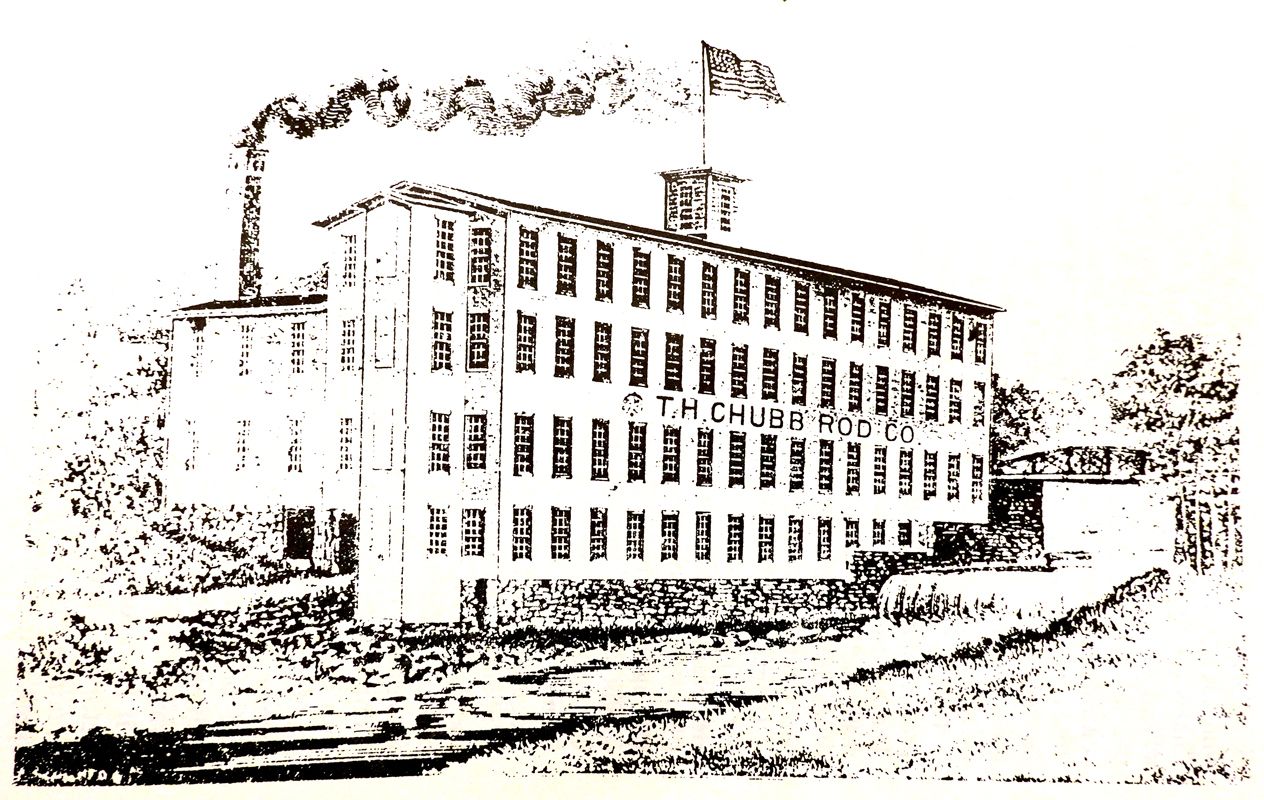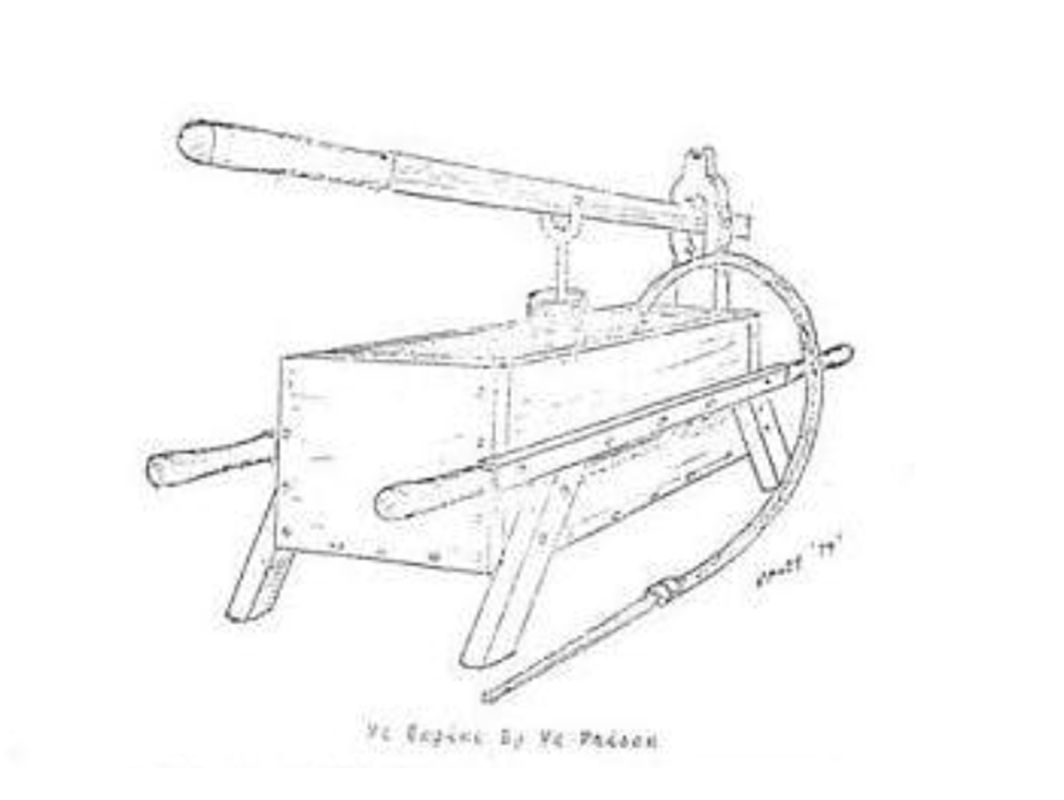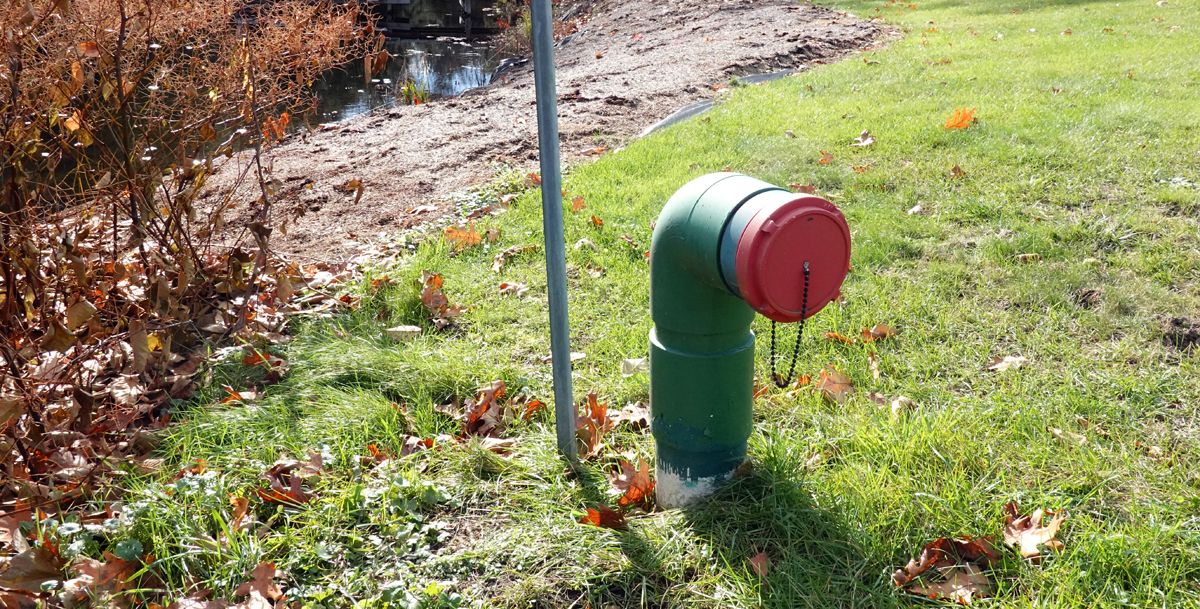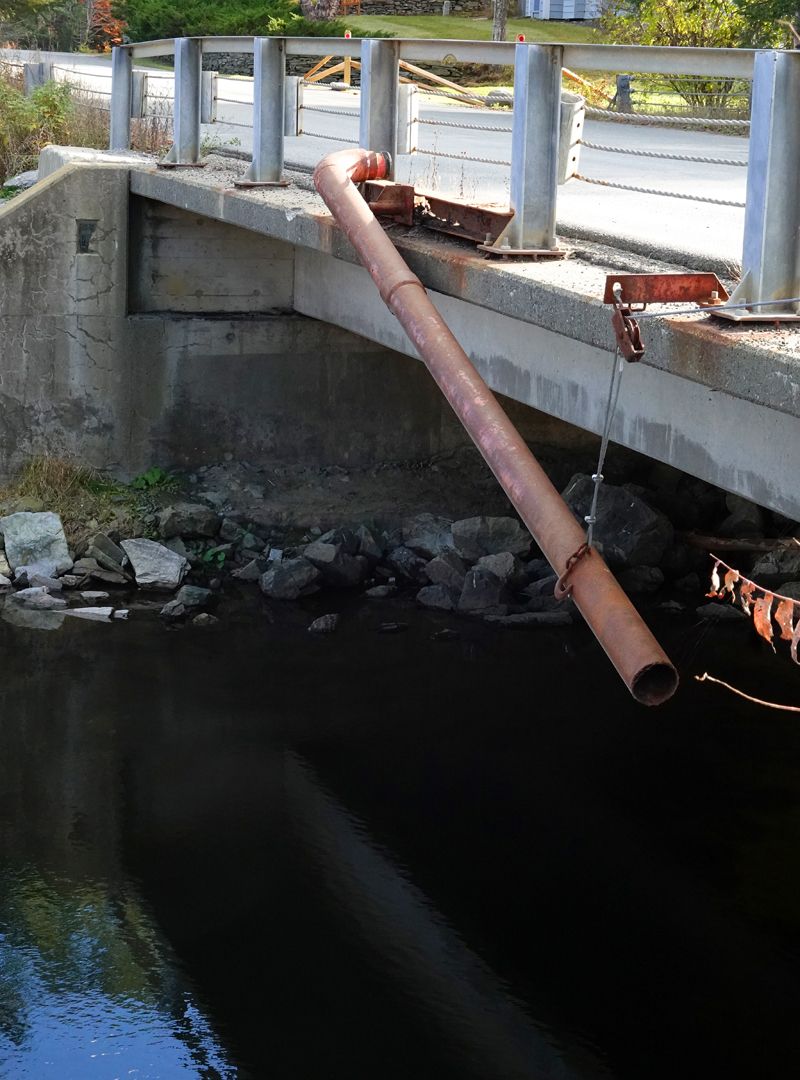Fire Ponds are part of our essential town infrastructure
Thetford has 27 fire ponds, many of which were built in the 1960's.

Thetford has the dubious distinction of being the only Vermont town on the Connecticut River between Hartford and Wells River that lacks underground water mains for fire protection. In that respect it compares with smaller, more rural communities.
Across much of New England, outside of its cities, buildings are predominantly constructed of wood. Historically wood was a plentiful material as forested land was being cleared for farming. Fire has been a constant danger. Notable fires in Thetford were the 1873 fire that burned down both the grist mill and the saw mill on the Ompompanoosuc River in Thetford Center, near the covered bridge. The 1886 fire in North Thetford destroyed the sawmill on Gun Brook. The enormous mill at the Rt 113 bridge on the Ompompanoosuc River in Post Mills, known as the Chubb Rod Factory (and more recently as the Malmquist Mill) burned twice, in 1875 and again in 1891, and was twice rebuilt. The 1891 fire also destroyed the bridge, and the glow of the inferno was visible from Hanover, NH.

Buildings burned because it was impossible to transport large amounts of water fast enough. There are no accounts of firefighting methods of the day, but it was likely that “bucket brigades” to the nearest body of water played a role, as would hooks and chains to pull down walls to make fire breaks. While cities like Boston possessed mechanized fire engines by the 1800’s, there is no record of any firehouse in Thetford in that era.

Nowadays firefighting is a science. Summarizing part of that science in simplified form, for residential structures: to fight a fire in a detached, one- or two-family dwelling of no more than two stories requires 500 gallons of water per minute (30,000 gallons/hour) generally for two hours — provided there are no other buildings within 1000 ft. If there’s another structure at a distance between 1000 to 31 ft, the gallons per minute must increase to 750 (45,000 gallons/hour) to avoid burning down that adjacent building. Between 30 and 11 feet the water need is 1000 gallons per minute (60,000 gallons/hour), and if the separation is 10 ft or less, 1,500 gallons per minute (90,000 gallons / hour) are necessary. That’s a lot of water.
Without water mains, communities like Thetford depend largely on fire ponds for protection. If you notice a roadside pond with a pipe in the ground beside it, that’s a fire pond and dry hydrant — "dry" meaning a non-pressurized pipe with a tanker truck fitting, permanently installed in a water source like a pond or lake. Besides the critical hydrant, fire ponds have other requirements. Solid ground, such as a road beside the pond, is essential to allow heavy tanker trucks to pull up at the hydrant without getting stuck. The pond needs depth to ensure there will be thousands of gallons of water at all times. Twenty feet deep is not unheard of in Thetford. The top few feet account for winter ice and summer drought and are not considered part of the minimum of 60,000 gallons of “useable” water — under drought conditions. Many fire ponds are created by dams on streams, thus dam structure, height, and overflows must be properly designed and built. And a fire pond should be located where it can serve a reasonable number of buildings.

In 1998 the Vermont Legislature recognized the need for more fire protection and appropriated funds to make dry hydrants more affordable for rural Vermont communities. This money is available through a grant program administered by the Vermont Rural Fire Protection Task Force, a project of the Vermont Association of Conservation Districts. (Thetford is served by the White River Natural Resources Conservation District.) They fund 75% of the expense of installing a dry hydrant that provides at least 1000 gallons per minute.
Thetford, in fact, had a spate of building fire ponds that pre-dates this initiative. In a period spanning the 1960’s, twenty or more fire ponds were constructed. The Listers estimate that there are currently about 27 fire ponds in Thetford. According to several residents, incentives were provided for doing this, in addition to better fire protection. For a while landowners were eligible for a property tax break on the acreage of a fire pond with a hydrant. However this was challenged by a resident named Wes Kelley, and the Secretary of State found it to be not legal.
Even so, homeowners with a fire pond qualify for a fire insurance discount. And, in general, the number of miles from a fire pond has a bearing on homeowner’s fire insurance. For a residence 1000 ft or less from a fire pond (0.189 miles), insurance rates become more favorable.
For a period through the 1980s, the Town's subdivision regulations required that a fire pond be built when three or more lots were created and there was no existing fire pond within 1000 ft. A fire pond was built on Pero Hill under this regulation in 1979. However the Zoning Board of Adjustment (ZBA) waived it for the REB Mountain 6-lot subdivision, citing that there was no suitable location there for a fire pond. This was around the end of the 1970’s. In the mid 1980’s a large subdivision in Post Mills, initially seeking as many as 56 units between Cross Street and the Ompompanoosuc River, was also required to build a fire pond.
According to a draft Town Plan chapter in 2014, there was a Town Meeting vote in 1992 to raise money to install dry hydrants at key locations around town. The town offered residents assistance to help cover the cost of labor, supplies and a fire hydrant. As a result close to 20 dry hydrants were installed. There was also grant money through the George D. Aiken Conservation group that put in at least two hydrants, including one at Child’s Pond (shown in title photograph). In the records of the Rural Fire Protection Grant Program, Thetford is listed as receiving funds for 4 hydrants between 1998 and 2020.
One hydrant on the channel to the Lake Fairlee Dam has an ingenious design. It is suspended from the bridge over the channel and can be swung down to draw water when needed. It now appears disused.

Nowadays it is generally more difficult to build fire ponds because of requirements from the Agency of Natural Resources for stream alteration permits. In addition the subdivision regulations no longer compel the building of fire ponds.
Fire ponds are not the only emergency water sources. There are water cisterns in a few locations, for instance in East Thetford at the Mini Mart. Two cisterns for fire protection were installed there when Alan Avery was excavating for new gasoline storage tanks. The Pompanoosuc Mills furniture factory in East Thetford has a cistern, built under the floor when they constructed their new addition and Thetford Academy also has two cisterns.
The Fire Department checks dry hydrants once a year, flushes them and makes repairs as necessary. But who is responsible for maintenance of the pond? Back in 2020, water from a town culvert under Godfrey Road eroded the bank of Zebedee Brook adjacent to a fire pond and threatened the integrity of its dam. In a one-time agreement the town absorbed 75% of the repair cost because the damage was caused by the Town's culvert. However the Town made it clear that this did not constitute a repair to the fire pond itself or an acquisition of liability.
Jim Masland asked this same question at a recent selectboard meeting, noting that his fire pond on Pero Hill has been dry for over a year. A failed inlet pipe and possible leaking liner were cited. After a visit by Chad Whitcomb, Fire Chief, they agreed that the fire pond was not in a useful location. Jim is seeking to donate the hydrant to a better situated pond.
Photo credit: Li Shen
